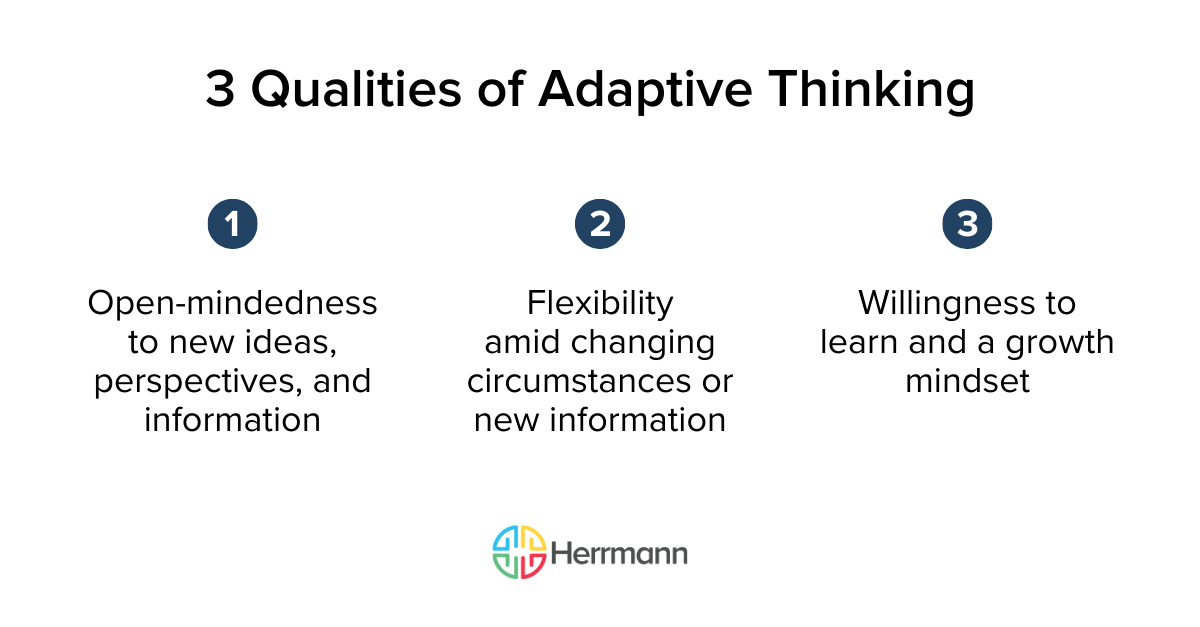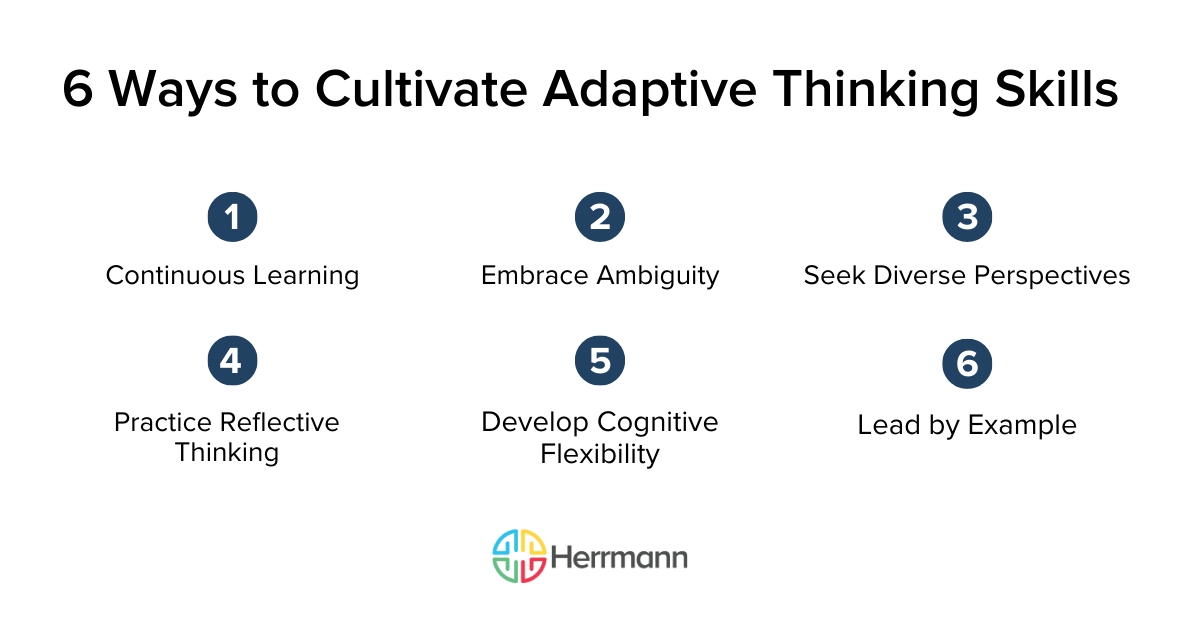Change is no longer an abstract concept. In just the past few years, we’ve weathered a pandemic, supply chain disruptions, massive and still-uncertain technological changes, and rising geopolitical tensions. Meanwhile, business leaders have seen the rise of remote and hybrid work, grappled with inflation and automation, and faced more scrutiny from workers around wages and well-being. Being a leader today requires being an adaptive thinker who’s willing to meet the moment.
Everyone experiences change differently, but we have tools to measure change objectively at a high level. Accenture’s Pulse of Change: 2024 Index examined six factors and found a 33% increase in the rate of change just in 2023 — and a 183% increase since 2019. Moreover, 88% of survey respondents expect change to accelerate in 2024.
Becoming an adaptive thinker isn’t just about delivering business results. It’s also about helping yourself and your team make better decisions that further organizational goals. Learn more about this approach, how to develop adaptive thinking strategies for your team, and how Whole Brain® Thinking can help.
What Is Adaptive Thinking?
Adaptive thinking represents people’s ability to adjust their thoughts, perspectives, and behaviors in response to changing circumstances or new information. Characteristics of adaptive thinkers include:
- Open-mindedness: Adaptive thinkers are receptive to new ideas, perspectives, and information. They're willing to challenge their existing beliefs and consider alternative viewpoints.
- Flexibility: Adaptive thinkers are responsive and can easily adjust their thinking and approaches when faced with unexpected situations or changing circumstances. They aren't rigid in their thinking or beholden to outdated facts. They're open to exploring different possibilities or methods.
- Willingness to learn: Adaptive thinkers have a growth mindset and actively seek opportunities for learning and personal development. They embrace new knowledge and skills because they’re curious and want to be better at solving problems and making decisions.

Contrasting Adaptive Thinking With Other Thinking Styles
To be adaptive is to reject rigid and fixed thinking. Understanding the drawbacks of rigid thinking is important so we can recognize when we’re falling into these habits and change course. Here are a few ways that rigid thinking shows up.
Linear Thinking
Linear thinking is characterized by a single-minded focus on finding a universal solution that can be followed, step by step. While linear thinking can be effective for many tasks or even entire job roles, it fails to account for the complexity and unpredictability of real-world problems. Linear thinking also falters in situations where existing knowledge and historical patterns don’t exist or have been disrupted. Adaptive thinking, by contrast, seeks to engage with new information, changing circumstances, or surprises, recognizing that a different approach might be needed.
Fixed Mindset
A fixed mindset is the belief that abilities, intelligence, and talents are fixed traits that can't be developed or changed. When you embrace this view, you might avoid challenges, fear failure, and resist feedback. This mindset can hinder adaptability, as it discourages individuals from seeking new experiences or believing that they can learn and grow from mistakes or setbacks.
By contrast, a growth mindset, as espoused by Carol Dweck, is a powerful mind hack that helps people embrace growth and learning. When you allow yourself to be adaptive, you’re more open to new experiences, ideas, and perspectives.
Change Resistance
It’s understandable, even natural, to gravitate toward familiar knowledge, routines, and ways of doing things, even when the evidence suggests change is required. When change resistance dominates our thinking, we struggle to adapt to new circumstances, seize opportunities, and respond effectively to evolving market conditions.
Adaptive thinkers understand that change is inevitable. They look to leverage it, identify emerging trends, and adjust accordingly.
6 Adaptive Thinking Strategies to Try
Adaptive thinking skills are essential for individuals and organizations to thrive in an ever-changing world. Here are some practical strategies and techniques to cultivate adaptive thinking.
Continuous Learning
Embrace a mindset of lifelong learning. Seek new knowledge, skills, and experiences in every aspect of your life. At work, look for formal and informal professional development opportunities from your employer and on your own.
Stay curious and open to new ideas. Pursuing continuous education expands your perspective and helps you view further information as an aid rather than as a threat. Change might still be challenging, but when you’re primed to try new things and reimagine existing paradigms, change won’t be as intimidating.
Embrace Ambiguity
Embracing ambiguity lets you explore multiple possibilities, think creatively, and adapt your strategies as new information emerges. This matters, mainly because ambiguity is standard in a VUCA world. Increasingly, businesses must navigate circumstances that lack familiarity, structure, and even rules of engagement. You won’t always have all the necessary information, but you’ll still need to act.
As a leader, you also can practice being uncomfortable with uncertainty. Recognize that not all problems have clear-cut solutions. Give team members opportunities to try new things, even if you’re not 100% sure they’ll succeed initially.
Seek Different Perspectives
Collaborative brainstorming is just one of many ways you can encourage a variety of perspectives and opinions in the workplace. When old solutions no longer work, the alternative isn’t clear, so you need a wider net of ideas than you might otherwise. Encourage your team to advocate for themselves and listen closely to their colleagues’ ideas, feedback, and questions.
In your professional and personal life, seek conversations with people from different backgrounds, cultures, and disciplines. Be curious about what they think and why they think that way. You don’t have to (and won’t) agree with every perspective, but you’ll be more informed and might even get a spark for your own ideas.
Practice Reflective Thinking
Set aside time for reflection, introspection, and deep thinking to evaluate your thoughts, assumptions, and decision-making processes. This reflection might be as simple as freeing your mind of worries and stress before returning to work. Or it might serve to review work situations and identify things you could have done differently.
Self-reflection doesn’t mean you have to beat yourself up over shortcomings or change your values in response to a single incident. But it can expand your thinking for the next time a similar situation arises.
Develop Cognitive Flexibility
Adaptive thinkers often must juggle multiple possibilities as they determine their course of action. Challenge yourself to think outside of your comfort zone. Engage in activities that require you to use different thinking styles or explore unfamiliar subjects. This helps develop cognitive flexibility, which is the ability to consider multiple concepts simultaneously or to switch between concepts easily.
Lead by Example
Leaders play a crucial role in fostering adaptive thinking within organizations. Lead by example by demonstrating adaptive thinking skills, embracing change, and encouraging a growth mindset. Create a supportive environment where individuals feel empowered to challenge the status quo, share ideas, and take ownership of their learning and development. Becoming an adaptive thinker isn’t necessarily easy and can even be scary. When leaders go first, they give employees confidence that embracing adaptability is something the culture welcomes and rewards.

Improving Thinking Agility With Whole Brain® Thinking
The Whole Brain® Thinking methodology, developed by Ned Herrmann, is based on the concept that individuals have different thinking preferences and that leveraging these preferences can lead to better problem-solving, decision-making, and communication. Whole Brain® Thinking consists of four distinct but interrelated thinking preferences: Analytical (blue), Practical (green), Relational (red), and Experimental (yellow).
Whole Brain® Thinking recognizes that individuals prefer one or more quadrants but also that they can succeed with all of them. Teams in which employees share their Whole Brain® preferences can better understand each other’s approaches to workplace matters. Instead of differences being mysterious or threatening, your team can leverage their different thinking preferences as a force-multiplier.
Being an adaptive thinker requires that people stretch themselves. One way to do this is to practice using thinking preferences that aren’t your go-to choice. When you understand your colleagues’ thinking preferences, you also improve your adaptability by respecting and leveraging these differences for more creative thinking, collaboration, and decision-making.
Adaptive Thinking for the Individual
Consider how Whole Brain® Thinking can help individuals become more adaptive. If you know you have a strong preference for analytical (blue) thinking, that means you prefer to deal in logic, data and quantifiable things. To become a more adaptive thinker, you can intentionally practice accessing other quadrants.
For instance, you can challenge yourself to be more abstract and imaginative (Yellow) when faced with a thorny challenge. Similarly, when you face a customer service problem, consider temporarily setting aside data-driven calculations to consider the effect on customer relationships (Red). The point is to push yourself to look at situations differently than your default — because when the unexpected does occur, you’ll have no choice.
Adaptive Thinking for the Team
As a team leader, you can do the same with your employees, particularly if most of them tend to prefer the same one or two quadrants. For example, if your team is tightly focused on structure, scheduling, and organization (Green), it’s probably great at keeping projects on track and executing strategy, among other skills. But this preference might come under pressure if there are business disruptions or there’s no blueprint for a new project.
To prepare for such scenarios, you might have your Green team think about how its scheduling affects people’s morale or its ability to focus on the right tasks at the right time (Red). Or you might lead them through an exercise: What if the current project management processes were no longer available? How would they adapt? This experimental, innovative Yellow thinking might not be the team’s go-to approach, but the stretch is the point. Should the need arise, the team can have some level of comfort as it adapts.
You Can’t Predict the Future, But You Can Adapt
Routines, habits, and best practices remain valuable components of business success. But increasingly, the expected is giving way to the unexpected. No one can really predict the future with consistency, but we can prepare ourselves to assess the situation, devise a response, and execute it in new ways without sacrificing our values or principles.
Being an adaptive thinker helps you and your organization meet the moment while remaining true to yourself. The best part is that you can practice this skill and hone it. And there’s no better time to start than today.
How will you adapt as a leader? Download our guide to developing thinking agility for yourself and your team.


![[HG] FeaturedImage_How to Become an Adaptive Thinker-2 [HG] FeaturedImage_How to Become an Adaptive Thinker-2](https://www.thinkherrmann.com/hubfs/%5BHG%5D%20FeaturedImage_How%20to%20Become%20an%20Adaptive%20Thinker-2.png)









